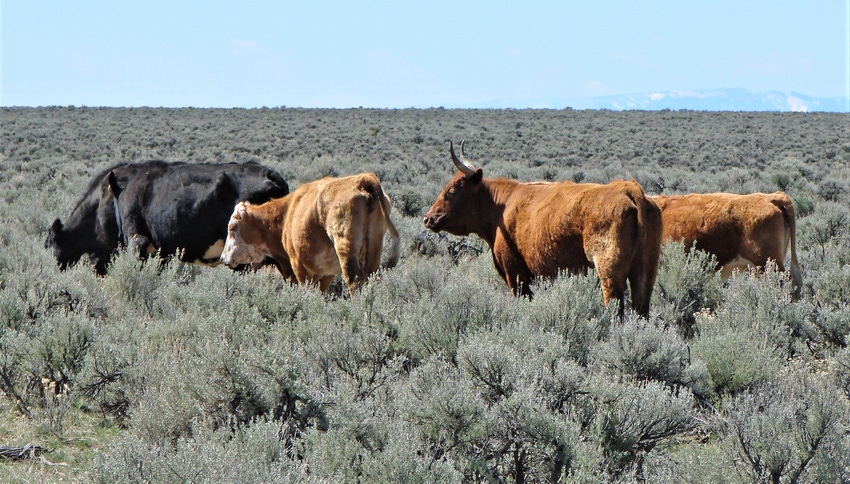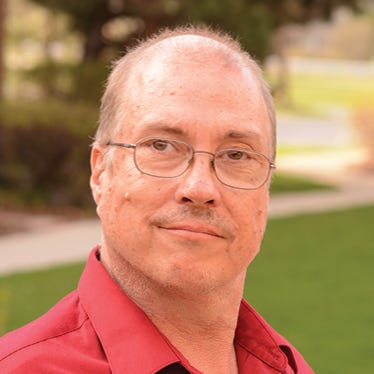
Ranchers’ groups are sidling up to a U.S. Bureau of Land Management plan that seeks to conserve and restore sagebrush communities within a 223 million-acre area in parts of six Western states that are imperiled by wildfire.
The agency on Nov. 27 unveiled its final environmental statement for fuels reduction and rangeland restoration in the Great Basin, which includes portions of California, Oregon, Washington, Idaho, Nevada and Utah. The move initiated a 30-day public review before a final record of decision is issued.
Groups including the Public Lands Council and California Cattlemen’s Association say they’re pleased that the agency’s preferred alternative explicitly acknowledges the role that targeted grazing plays in combating hazardous fuels accumulation and invasive species.
The plan “does not authorize specific projects … but is the NEPA (National Environmental Policy Act) document that will be the basis for environmental analysis for projects in the coming years,” the PLC stated in a legislative bulletin. “This document is likely to face legal challenges, but none yet have been publicly announced.”
Wide array of tools
The CCA urged its members this spring to speak out in support of the chosen alternative, which the organization says provides the widest array of tools for fuels management and was the only alternative considered which specifically covers grazing’s role.
Federal officials say the effort complements a decision in the spring to clear up to 11,000 miles of fuel breaks in the Great Basin. The decision is already being used to expedite construction of about 190 miles of fuel breaks in California, Oregon, Idaho and Nevada, officials said.
“The department has led the way in advancing critical treatments, including creating fuel breaks, which stop or slow fires,” said Casey Hammond, the U.S. Interior Department’s principal deputy assistant secretary of lands and minerals.
“This effort focused on reducing fuels and restoring natural vegetation will reduce the intensity of wildfires, which in turn will reduce the threats from large and severe wildfires to sagebrush-steppe ecosystem and rangeland resources,” Hammond said. “As we get projects done, these two approaches will work together.”
The effort comes as the West suffered one of the worst wildfire seasons in history in 2020, as more than 100 blazes in August and September burned more than 8 million acres, destroyed 13,887 buildings and killed 46 people, including 32 in California, according to state and federal authorities.
The fires charred hundreds of square miles of rangeland and timber, destroyed livestock and shrouded much of the West in thick smoke and ash for weeks.
Sagebrush devastated
Worsening wildfires and the spread of invasive annual grasses have been devastating so-called sagebrush communities, which the BLM calls a vital part of Western working landscapes with more than 350 species of plants and wildlife.
The Great Basin region is losing sagebrush communities faster than they can reestablish naturally, as about 45% of the historical range of sagebrush has been lost, federal officials say.
“Restoring sagebrush communities improves the sustainability of working rangelands and can reduce the expansion of invasive annual grasses,” said William Perry Pendley, the agency’s deputy director for policy and programs. “People in the Great Basin depend on these landscapes for their livelihoods and recreation, and wildlife rely on them for habitat.”
Cattle grazing plays a key role in reducing fire fuels on rangelands in the West, a team of University of California and other scientists concluded in a preliminary report in September. Without it, California alone would have hundreds to thousands more pounds per acre of fire fuels on the landscape, potentially leading to larger and more severe fires, the scientists wrote.
As cattle generally don’t consume forage uniformly in a field, grazed rangelands will have patches of ground that are grazed low enough to slow fire extent and rate of speed, observed UC Cooperative Extension advisers Devii Rao, Sheila Barry, Matthew Shapero and Larry Forero; UC Berkeley extension specialist Luke Macaulay; and three other authors. The research was funded by the California Cattle Council.
With widespread and severe wildfires expected to increase over time, conditions require “that we take advantage of all the tools in our management toolbox to protect public safety while meeting our broader rangeland management objectives,” the researchers wrote.
About the Author(s)
You May Also Like






